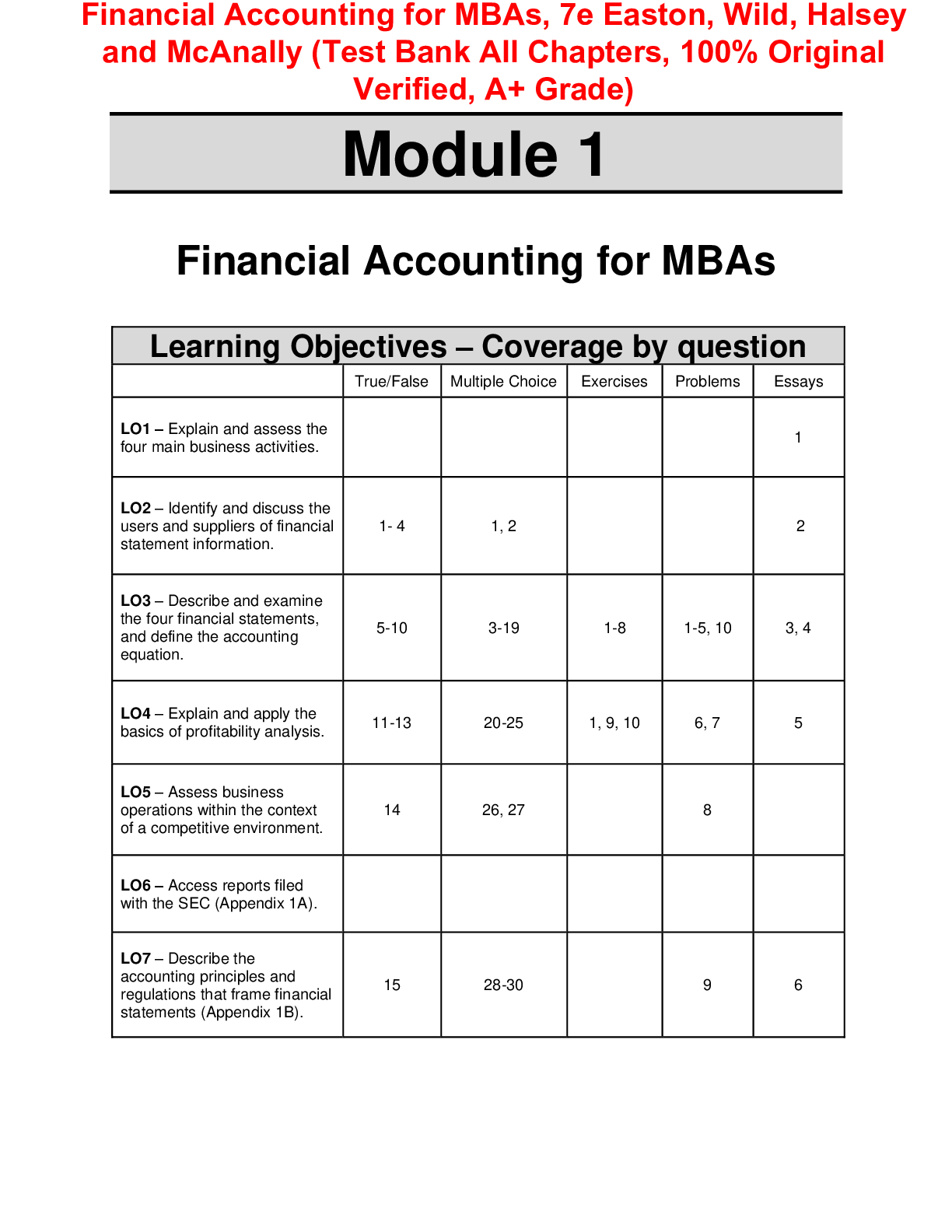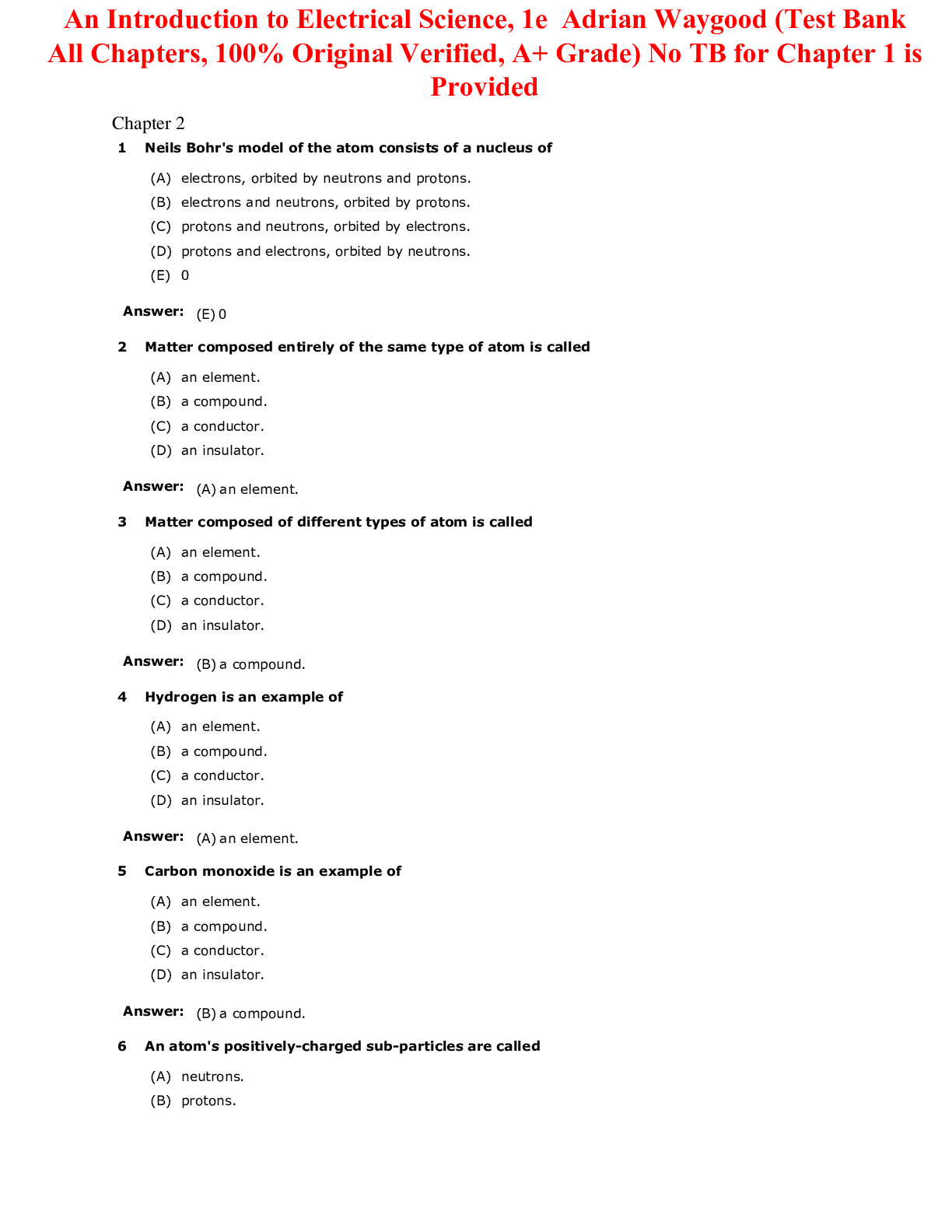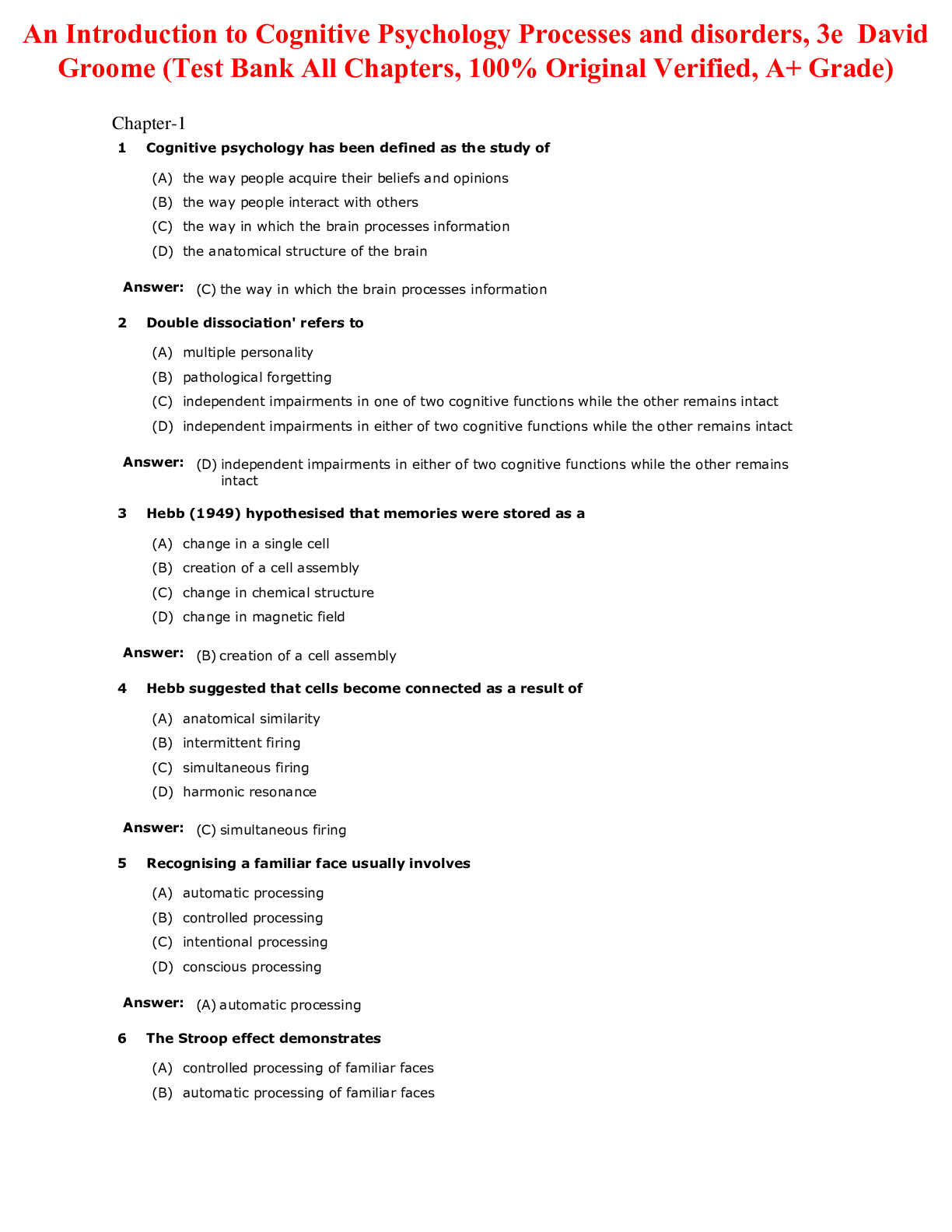NUR 2407 Finals Practice Questions And Answers/Rated A
Document Content and Description Below
Pharmacology Final Exam Review Questions (Open book quizzes & NCLEX Review Questions) Quiz 6 1.) Potassium chloride 10 mEq intravenously has been ordered for a client whose potassium is 2.9 followi ng... diuretics. How will the nurse administer the potassium dose? A) Dilute the dose in a 50 ml IV rider and infused over 1 hour B) Push the dose as a rapid IV push because of the patient’s dangerously low potassium level C) Push the dose slowly over 10 minutes D) Ask to give the dose in a large muscle since the intravenously route is too dangerous 2.) A client who has been taking Lisinopril (an ace inhibitor) for 2 weeks complains of a dry cough. How should the nurse respond to this complaint? A) The cough will subside within 5 to 7 days when the body becomes accustomed to the medicine. B) The cough is a sign of impending angioedema. The client should stop the medicine immediately. C) The cough is a result of immune suppression. The client should stop the medicine immediately D) The cough is a common side effect of prils. Sartans may be prescribed instead if it becomes intolerable 3.) A client is experiencing edema. Which over-the-counter medication might be reducing the diuretic effects of her lisinopril? A) St John’s Wort B) Glucosamine C) Vitamin C D) Ibuprofen 4.) A client, who has been seeing multiple doctors, reports that she is taking Lisinopril and another antihypertensive medication, the name of which she can’t recall. What type of antihypertensive is contraindicated when people are taking ACE inhibitors due to risk of compound effects? A) Thiazide diuretics B) Beta blockers C) Potassium-sparing diuretics D) Calcium channel blockers 5.) In preparing discharge education for a client who has just begun hydrochlorothiazide therapy, a nurse reviews the client's lab results. Which finding should the nurse be concerned about in relationship to the discharge prescription? A) blood sugar level of 80 mg/dL B) potassium level of 3.1 mEq/L C) hemoglobin of 15 g/dL D) potassium level of 4.8 mEq/L. 6.) A client has had hypertension for approximately 7 years and now is interested in becoming pregnant. What is the safest anti-hypertensive for a woman in the early stages of pregnancy? A) Amlodipine B) Lisinopril C) Methyldopa D) Valsartan 7.) If a client is taking carvedilol, a beta blocker, which adverse effect should the nurse watch for? A) Hypoventilation B) Sinus tachycardia C) Hypergylcemia D) Dizziness 8.) While preparing to administer a scheduled dose of digoxin, the nurse finds a new lab result showing a digoxin level of 0.7 ng/mL. What action should the nurse take? A) Hold the drug for an hour and reassess the level. B) Withhold the drug and notify the prescriber immediately. C) Administer Digibind to counteract the toxicity. D) Check the patient’s apical pulse, and if it is within a safe range, administer the digoxin. 9.) A client has been taking digoxin 0.25 mg, and furosemide 40 mg, daily. Upon routine assessment by the nurse, the client states, “I see yellow halos around the lights.” The nurse should perform which of the following actions based on this assessment? A) Consult the provider then request a digoxin and potassium level check B) Withhold the next dose of furosemide. C) Continue to monitor the patient for heart failure. D) Document the findings and reassess in 1 hour. 10.) A client with angina is preparing to go home with a prescription for Nifedipine, a calcium channel blocker. What should the client be taught? A) Elevate your feet when you are sitting to avoid edema side effects B) Drink grapefruit juice with breakfast to reduce your risk of plaque. C) Eat cheese regularly to restore calcium and manage loose stools. D) Use salt substitute to replenish your potassium losses due to diuretic effects 11.) A client with stable angina asks why the physician told her to put her nitro patch on at 8am and take it off at 8pm. What explanation should he be given? A) The doctor is trying to reduce your risk of night falls. B) Patch-free intervals are needed to sustain medication effectiveness. C) The patch should be replaced, not removed at bedtime D) You should follow this advice for any patch medications you use. 12.) A client with stable angina as starting treatment with nifedipine a calcium channel blocker. The client’s spouse asks how nifedipine alleviates chest pain. How should the nurse respond? A) “They reduce platelet aggregation.” B) “They reducing the work of the heart by reducing aortic pressure (afterload).” C) “They increase the heart rate and contractility.” D) “They improve cardiac circulation through vasoconstriction.” 13.) The nurse is providing patient education to a patient who has just been given a new prescription for sublingual nitroglycerin tablets. Which statement by the client would indicate a need for additional teaching? A) “I should take the nitro every 2 to 3 minutes until my pain goes away.” B) “I should take one tablet every 5 minutes, up to a total of three tablets if needed.” C) “I should store my nitroglycerin in its original dark bottle to protect it from light.” D) “I should keep the bottle of nitro tightly closed to protect the tablets.” 14.) A client presents to the emergency department with chest pain. On a scale of 1:10 he rates the pain as a 6. His respiratory rate is 22. His blood pressure is 156/92. His heart rate is 110. He is afebrile. What other information should the nurse obtain before administering nitroglycerin? A) Has the patient experienced any dizziness or nausea within the last two weeks? B) Has the patient used any alcohol or drugs for erectile dysfunction recently? C) Has the patient taken any drugs within the past 12 hours? D) Has the patient had a previous heart attack? 15.) A client is being discharged to his home on enoxaparin (Lovenox) injections for treatment of deep vein thrombosis (DVT). Which of the following statements made by the client indicates a need for further discharge teaching by the nurse? A) “I will inject the enoxaparin into the fatty tissue of my abdomen.” B) “I hate needles, but I know enoxaparin doesn’t come in pill form.” C) “I will need to go to my doctor’s office each day to have my enoxaparin blood drawn." D) “I will call my physician if I pass black tarry stools or pink urine.” 16.) A client is brought to the emergency department for accidental warfarin (Coumadin) overdose. The nurse determines that the client has no apparent signs of bleeding. Which action should the nurse take next? A) Obtain a stat PTT level. B) Administer protamine sulfate. C) Type and cross-match the patient’s blood. D) Draw a stat blood level for PT or INR. 17.) In which of the following situations should the nurse prepare to administer of protamine sulfate? A) A patient on warfarin with an INR of 4 and tarry stools B) A patient on warfarin with a PT of 12 seconds and bleeding from a laceration C) A patient on a heparin drip with a PTT >120 seconds and active GI bleeding D) A patient on a heparin drip with a PTT of 60 seconds and pink-tinged urine 18.) A client is starting sildenafil (Viagra) for the treatment of pulmonary hypertension. Which of these medications could cause a serious reaction if they are taken with sildenafil? A) nitroglycerin, an antianginal B) clopidigrel, and antiplatelet C) simvastatin, an antilipemic D) CoEnzyme Q, an herbal remedy E) doxazosin, an alpha blocker Table for Individual Question Feedback 19.) Atenolol (Tenormin) has been prescribed for a client who is recovering from a recent heart attack. The nurse would consult the provider before giving the medicine in which of these situations? (Select all that apply.) A) Pulse 52 B) BP 108/86 C) Respirations 32 with wheezes D) Blood glucose 50 E) Tension headache F) Parkinsonian tremors 20.) A client presents in the clinic with concerns of having taken his dabigitran (Pradaxa) twice this morning. Realizing that this is a new oral anticoagulant (NOAC), what should the nurse do next? (Select all that apply.) A) Seek advice from the physician B) Ask the client to share how the overdose happened C) Have the client eat a spinach salad D) Have the lab check a stat INR E) Calm the client by explaining that the medication has a 12 hour half life F) Assess for signs of active bleeding [Show More]
Last updated: 1 year ago
Preview 1 out of 20 pages
Instant download
.png)
Instant download
Reviews( 0 )
Document information
Connected school, study & course
About the document
Uploaded On
Feb 09, 2022
Number of pages
20
Written in
Additional information
This document has been written for:
Uploaded
Feb 09, 2022
Downloads
0
Views
94



.png)

.png)
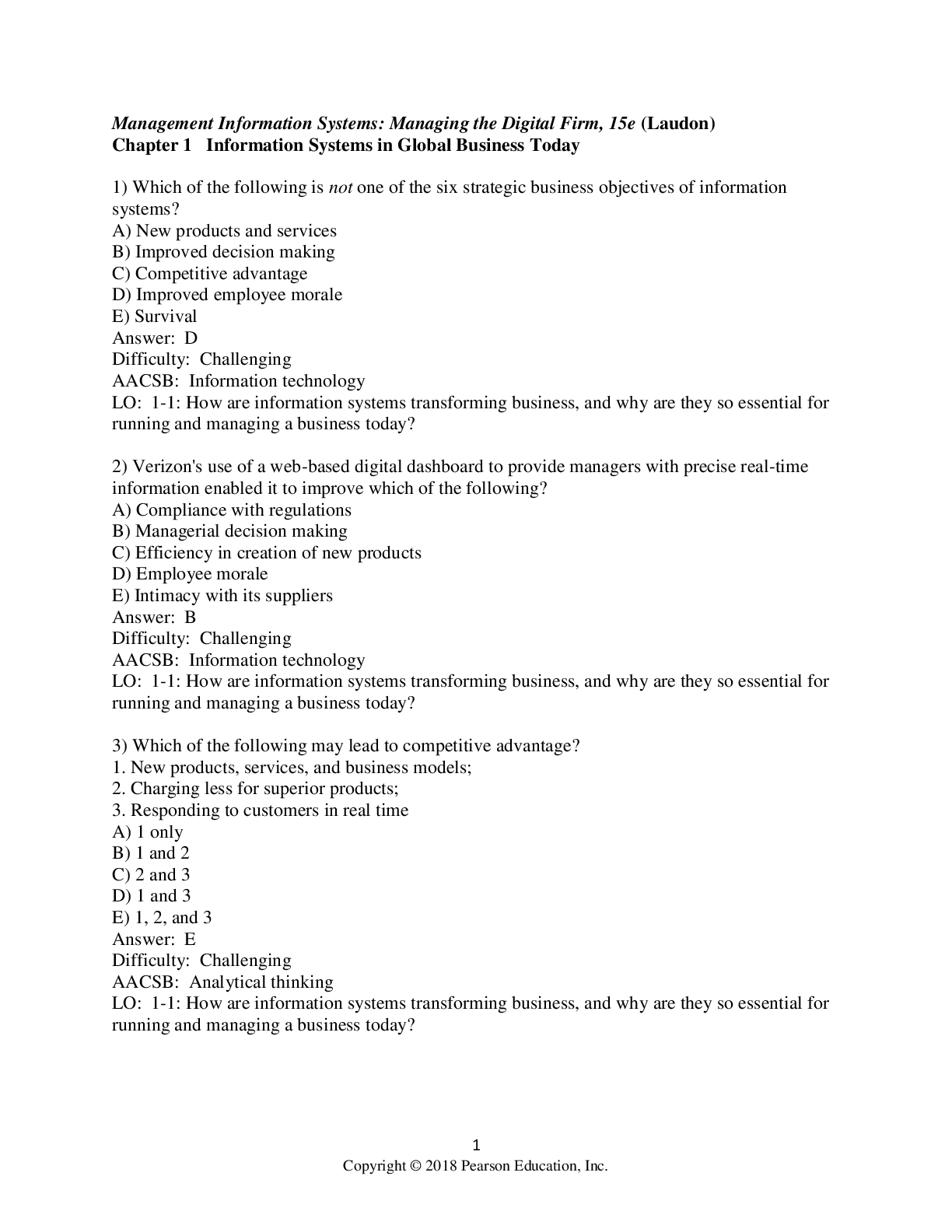
.png)

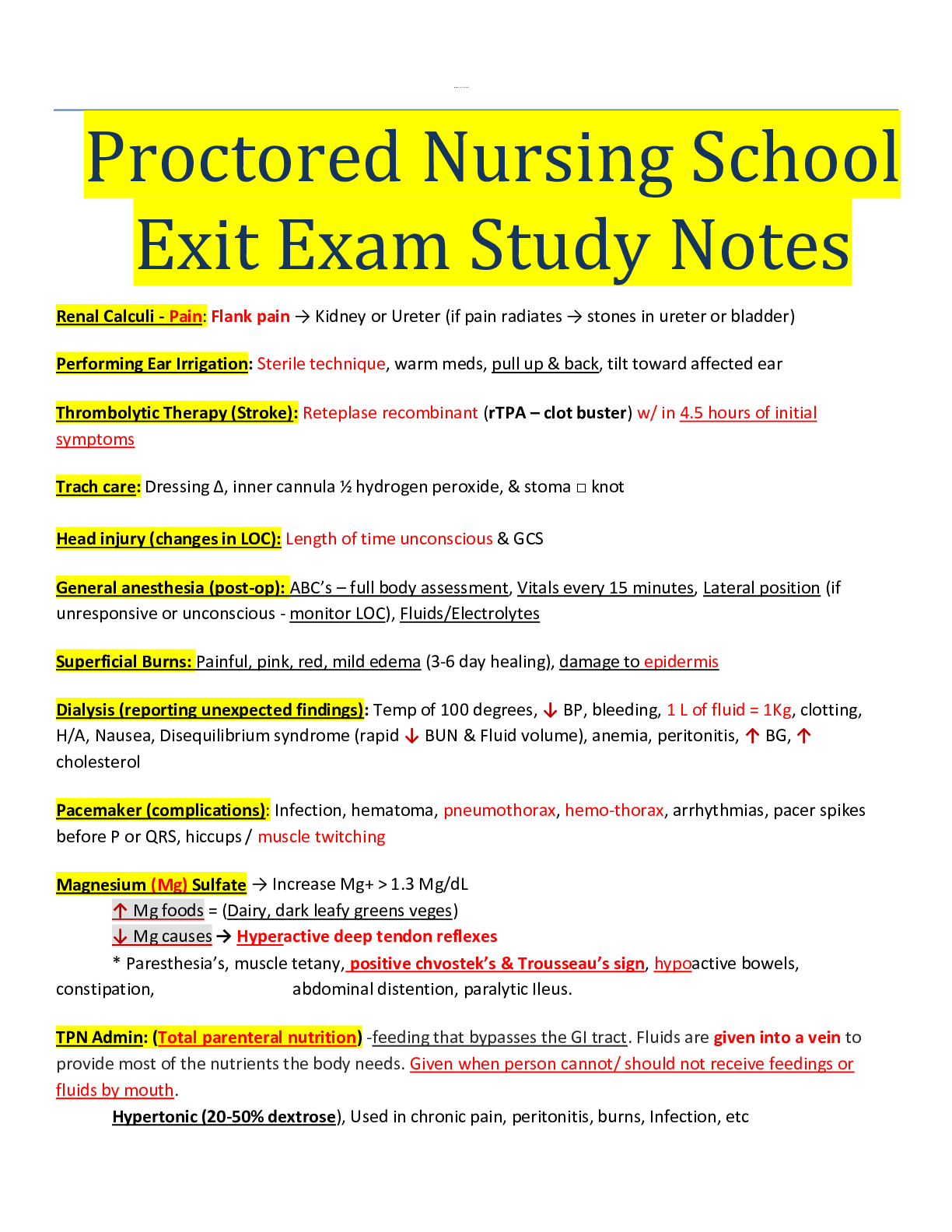
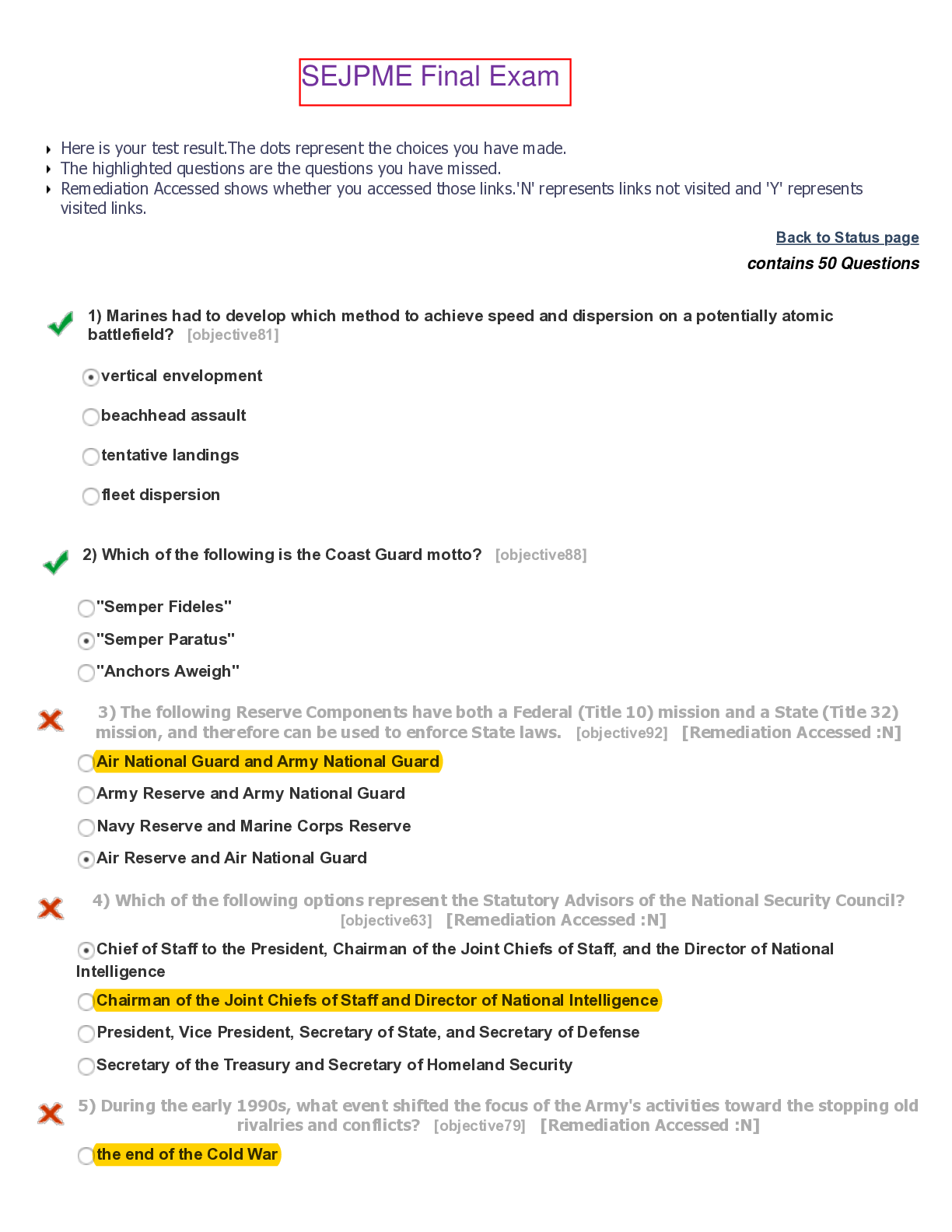

.png)

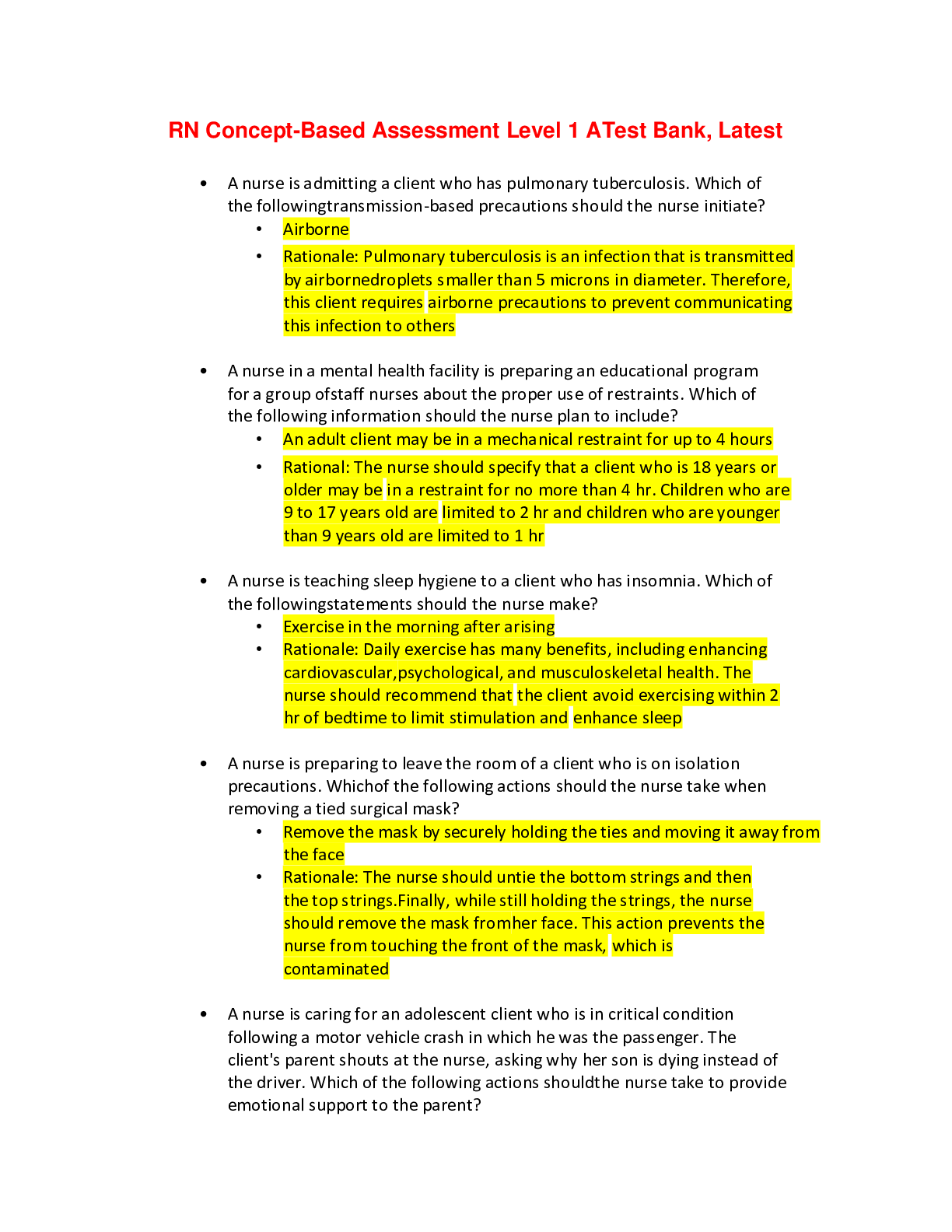
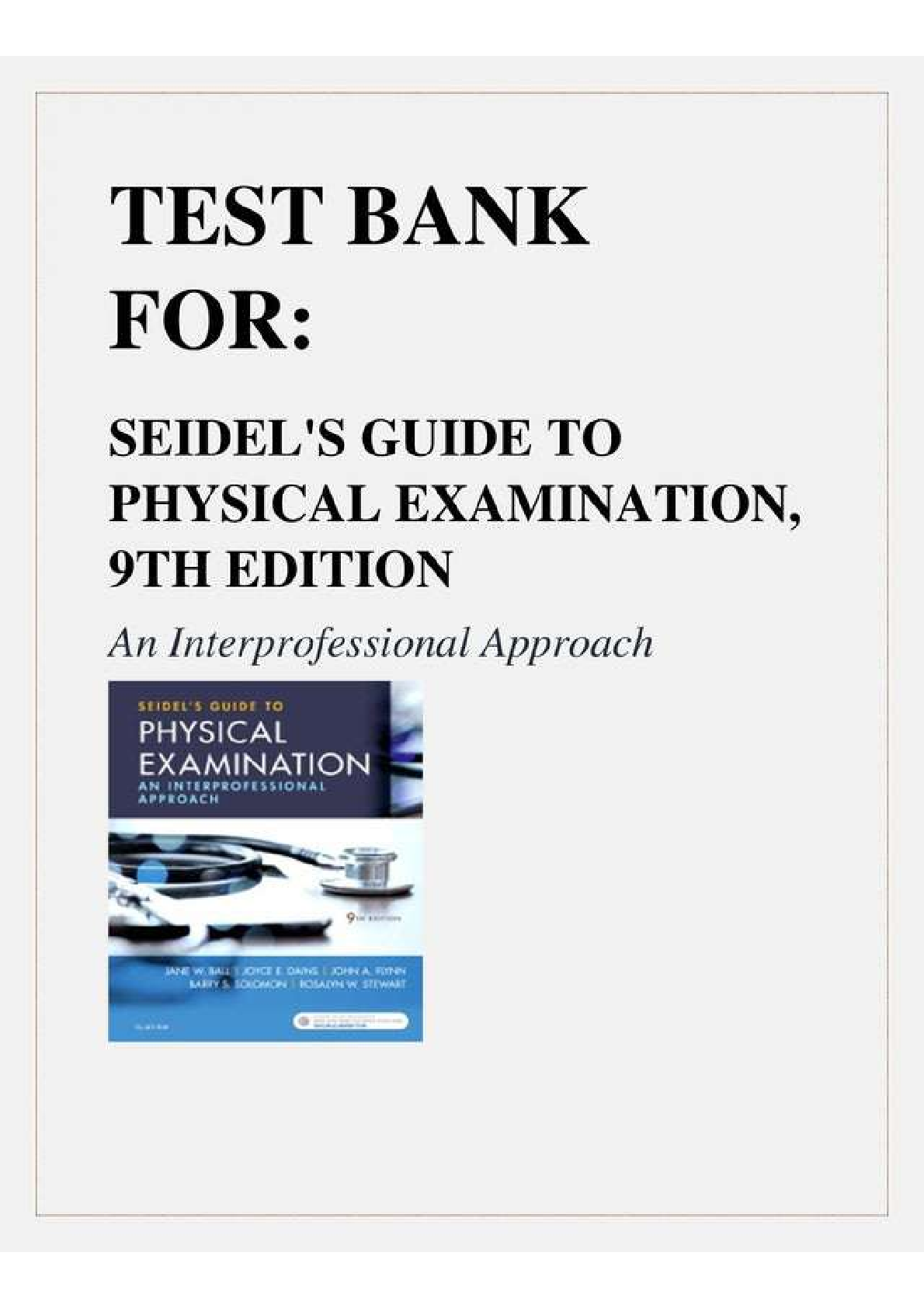



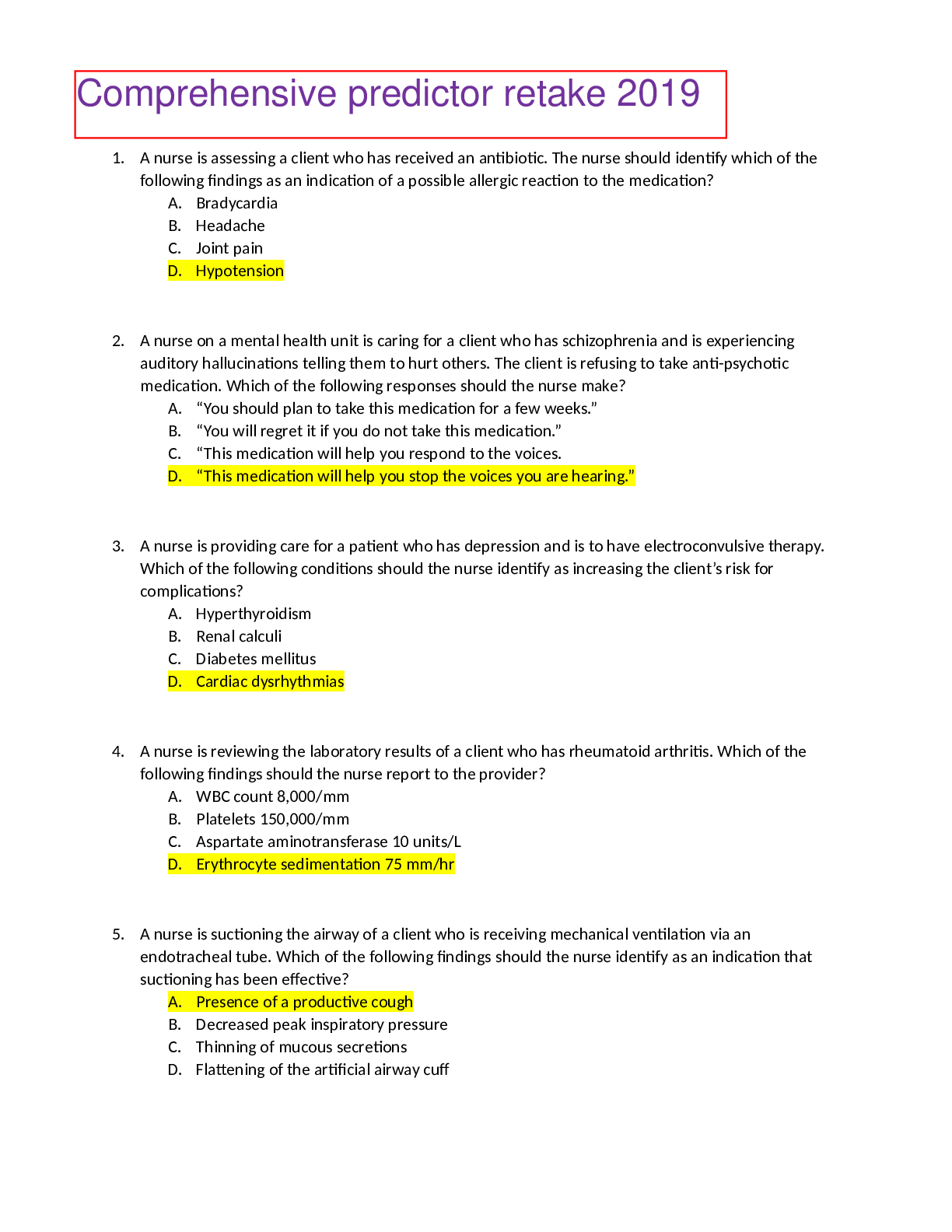
.png)
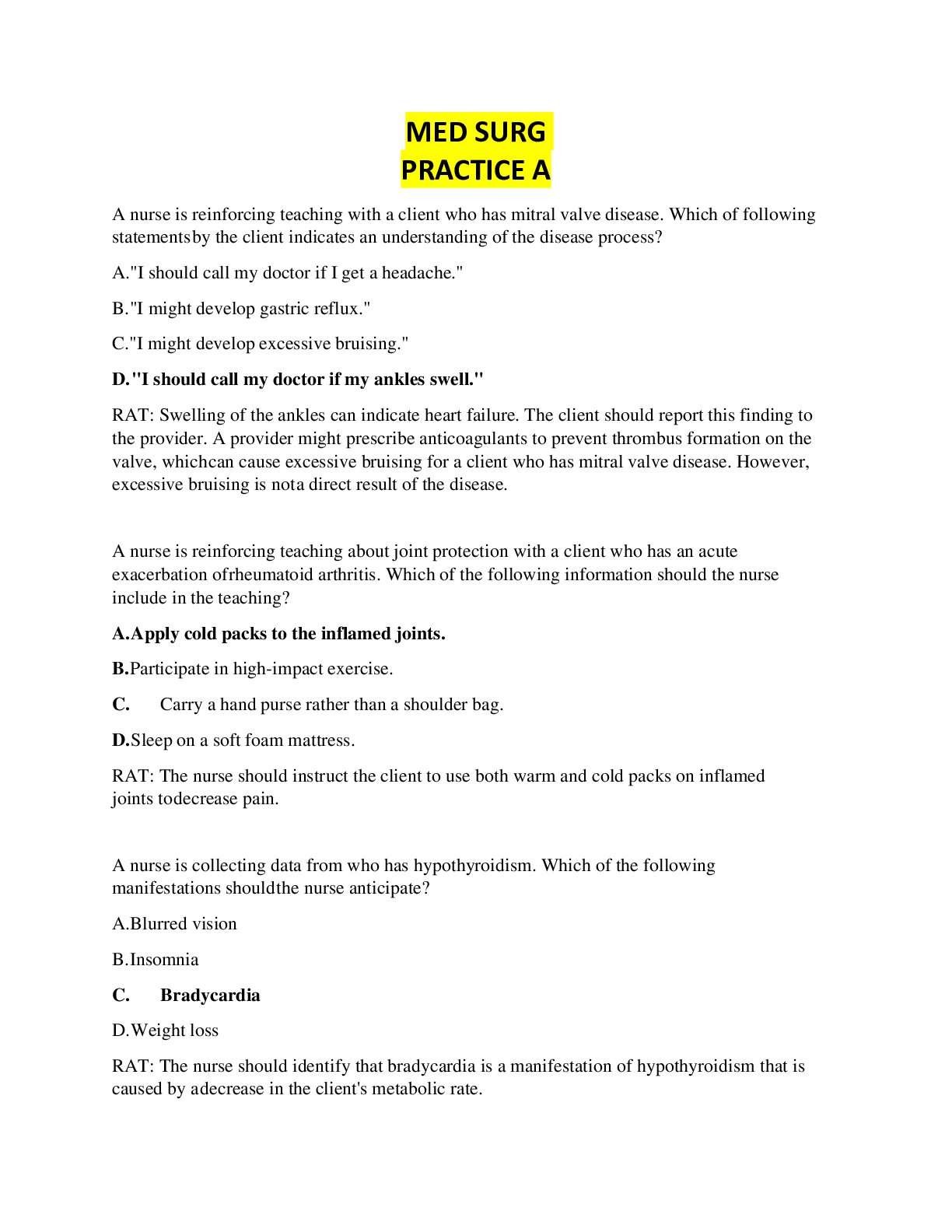
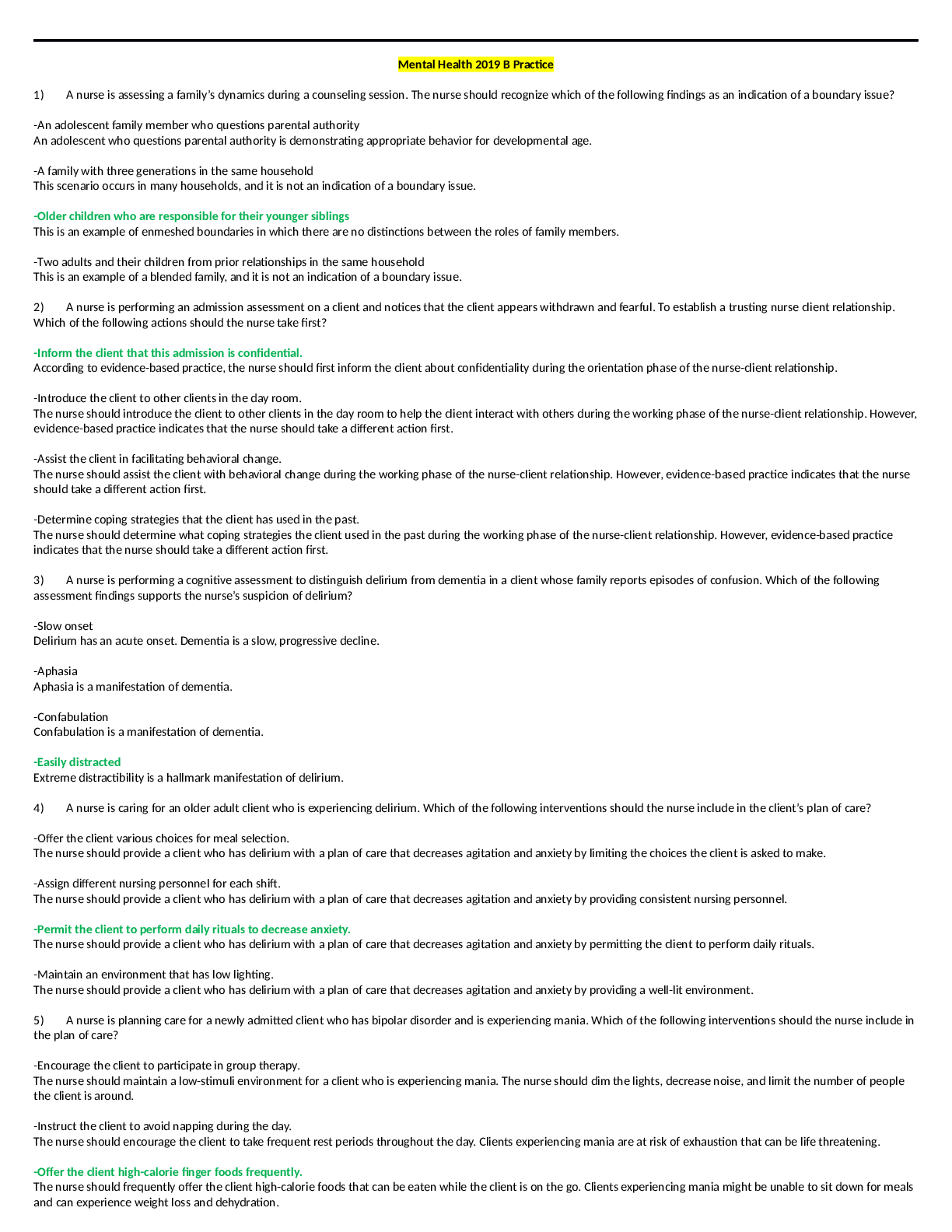
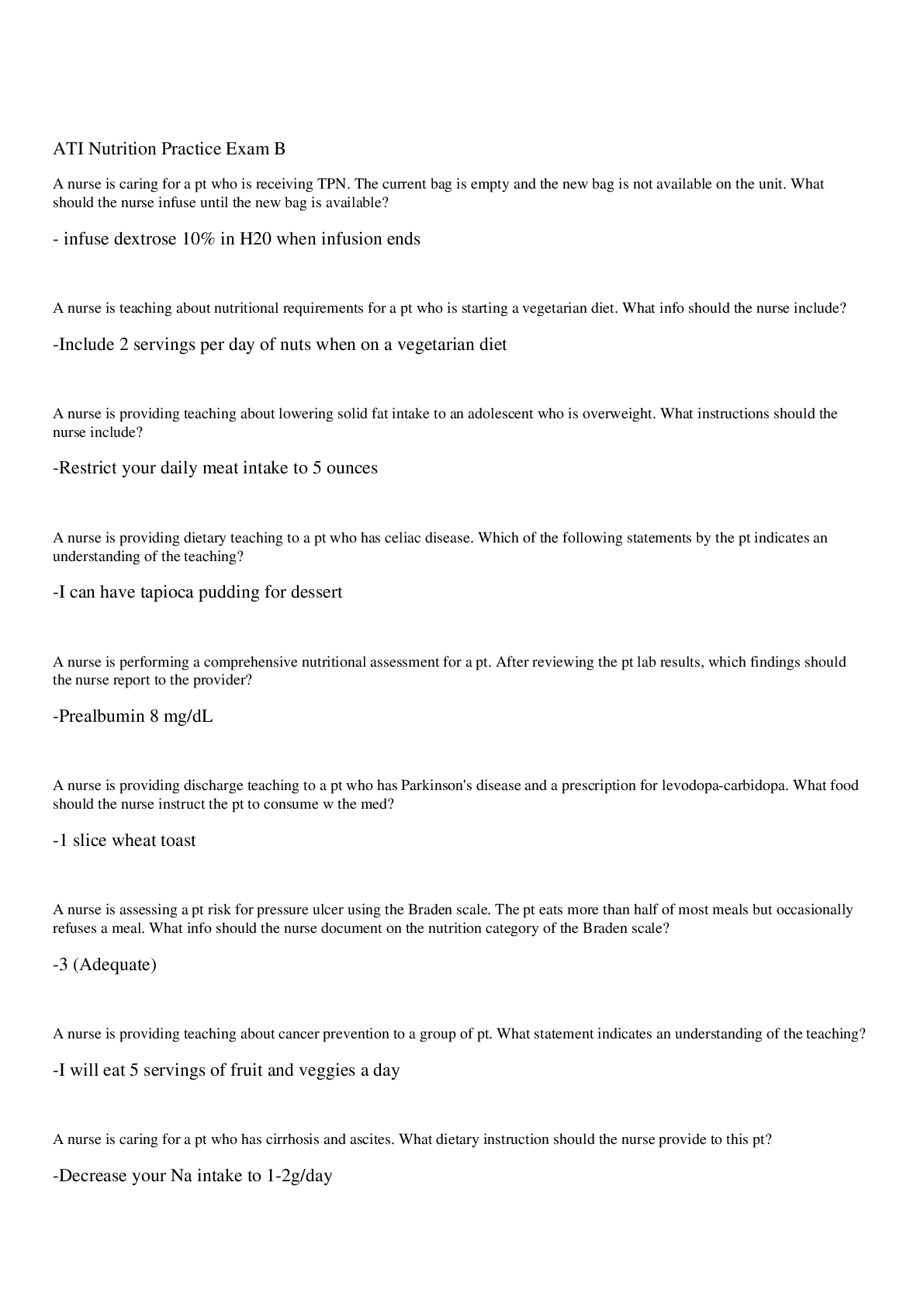
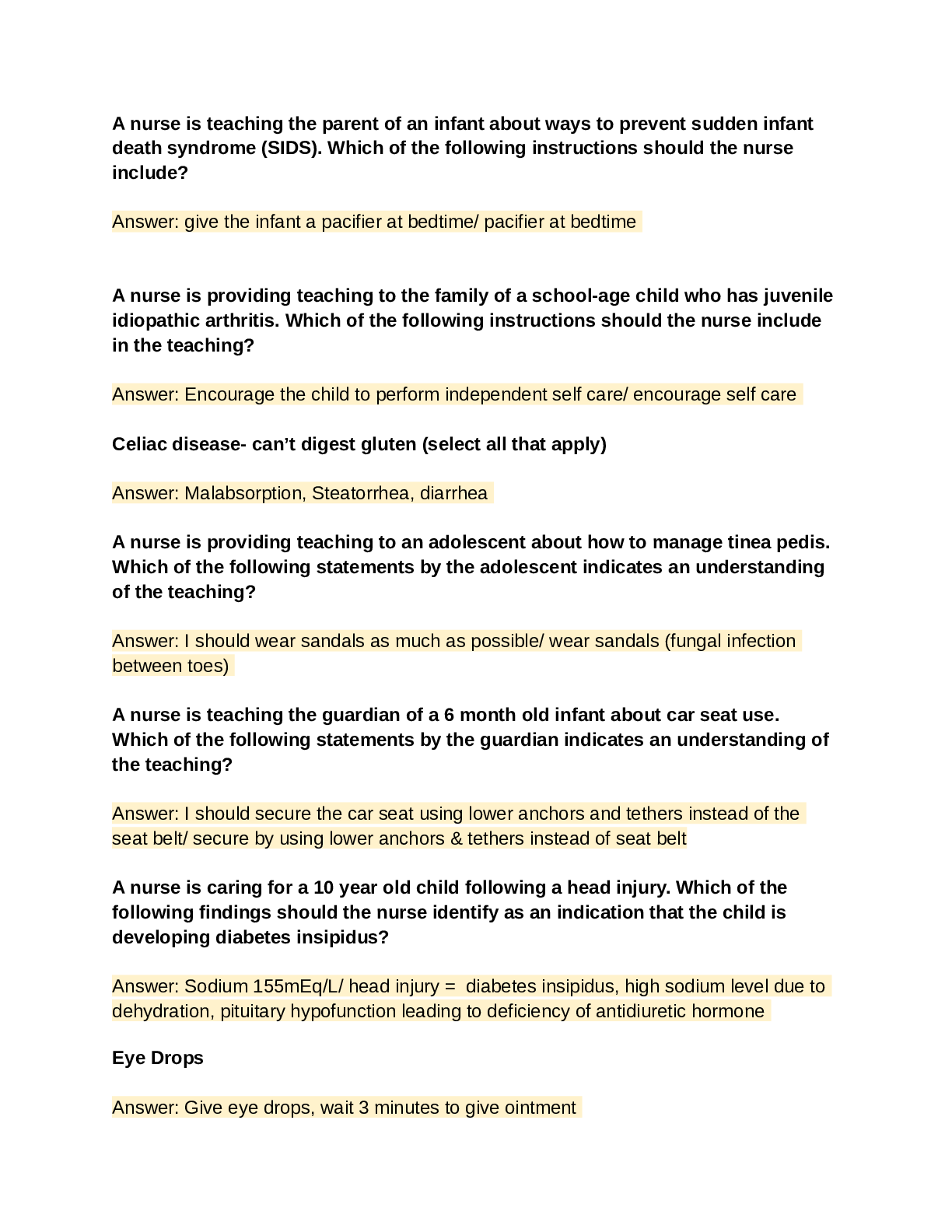
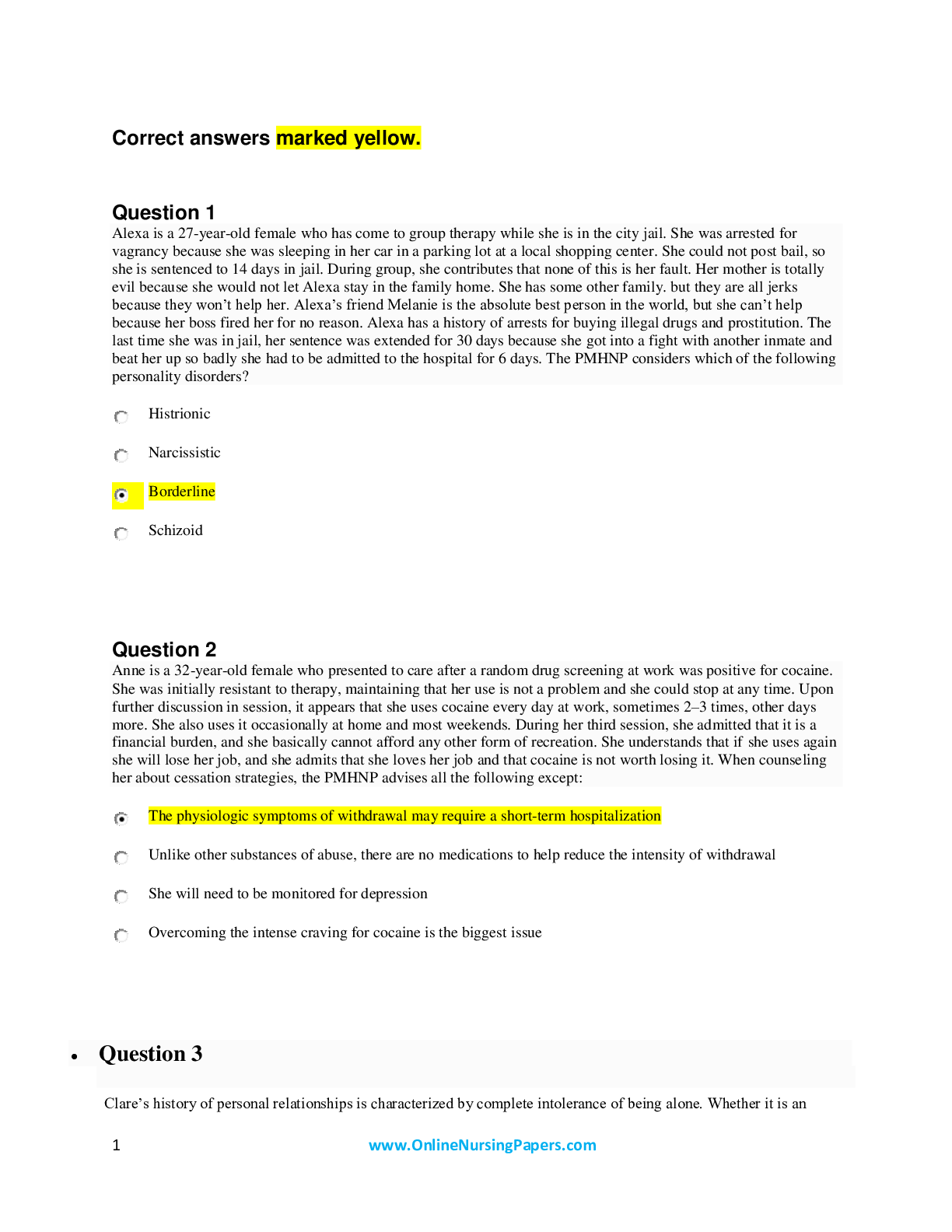
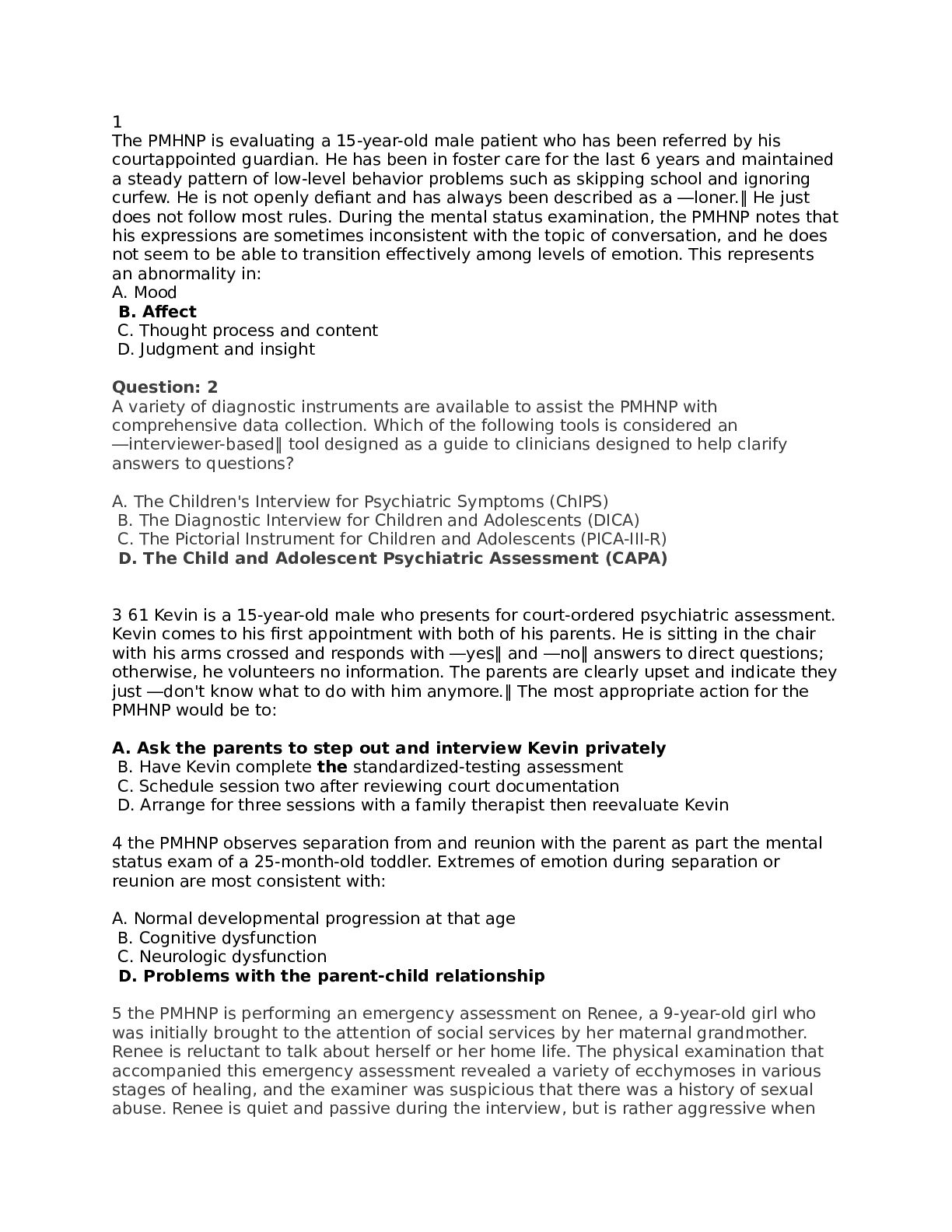
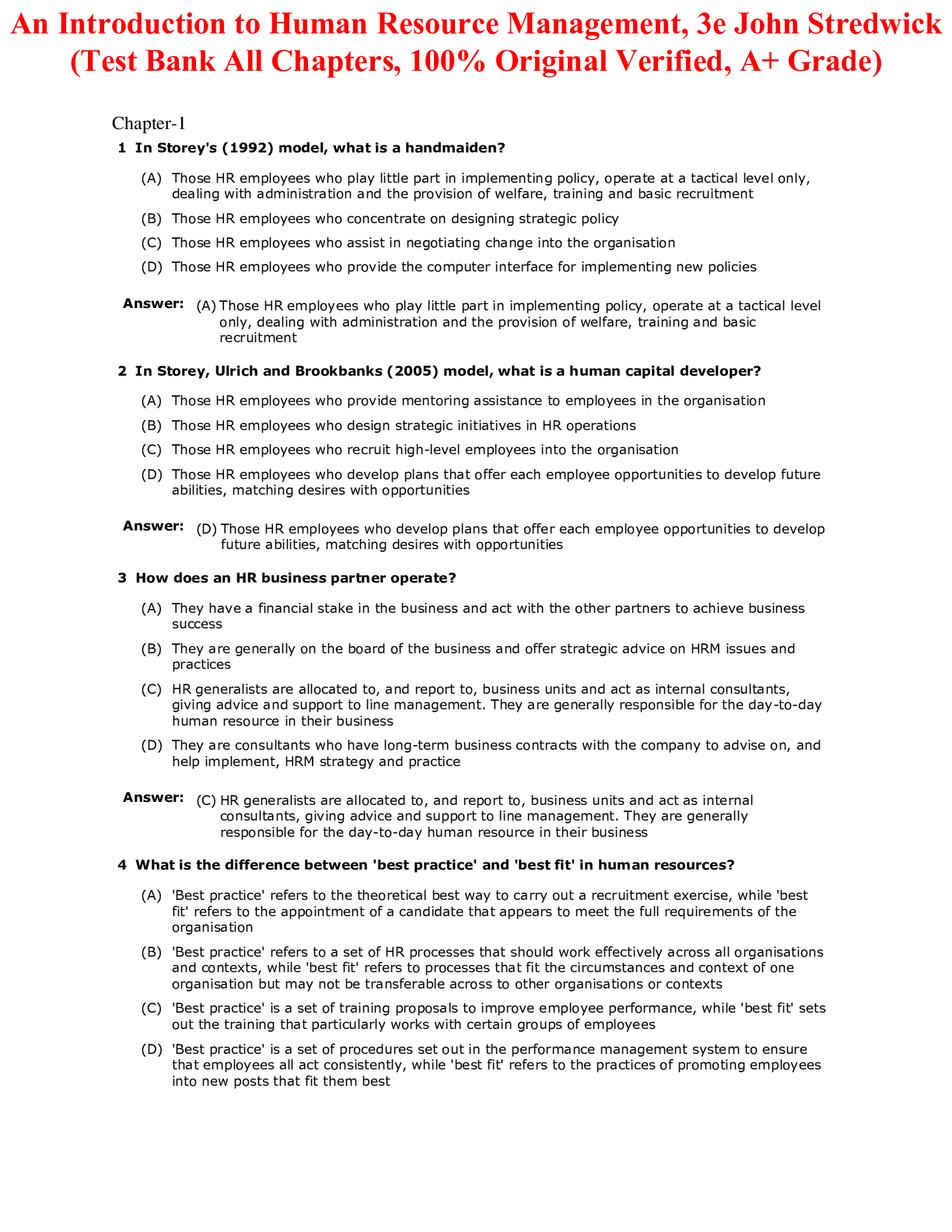

.png)
